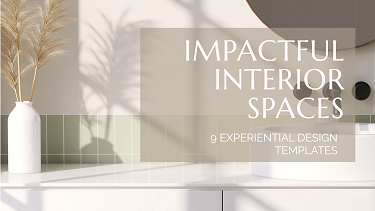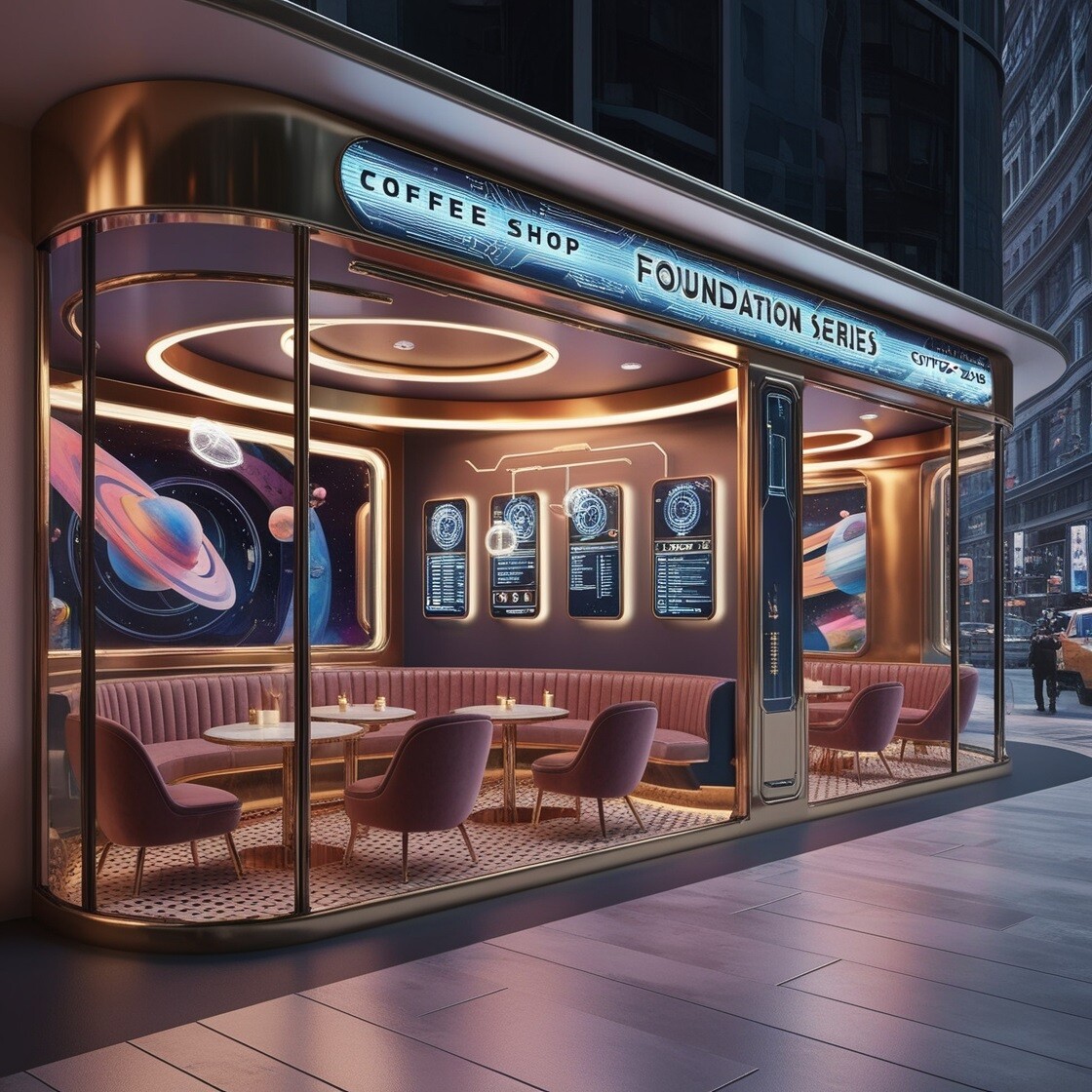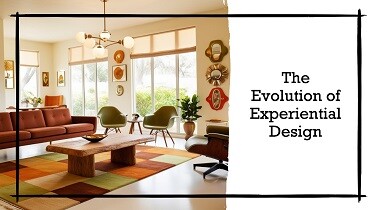Experiential interiors are sensorial spaces that influence mood, behaviour, and perception. These...
7 Key Principles of Hospitality Design
In today’s competitive hospitality industry, guests want more than a comfortable bed and a pretty room, they want an experience. As an experiential interior designer, I see firsthand how thoughtful design can turn a space into a memorable experience.
In this article, I will share the key principles of hospitality design and explain how these ideas can help your business stand out. Whether you own a boutique hotel, a resort, Airbnb, or any guest-focused space, these insights will show you how to create environments that keep customers coming back.
If you’d like to discuss these ideas further or explore how to apply them in your project, feel free to schedule a FREE online consultation here. Together, we can create spaces that your guests can live, feel, and remember.

The evolving world of hospitality design
Not too long ago, hospitality design was mostly about making places look attractive. Now, it is about creating experiences that engage the mind and the senses.
Guests look for stories, feelings, and connections in every aspect of their stay. When your hospitality space tells a story, you create a unique identity for your brand.
Consider luxury safari lodges, such as Mahali Mzuri in Kenya. These resorts are not just about luxury; they are designed to immerse guests in the beauty and culture of the Maasai Mara.
Every design choice works together to create an environment that feels authentic and extraordinary. This is a great example of how experiential design can elevate a hospitality space.
Principle 1: Storytelling through design
One of the most powerful tools in hospitality design is storytelling. Each space is a story, and the design should reflect that narrative. Storytelling helps guests connect emotionally with their surroundings.
How it works
- Design elements as storytellers: Every piece of furniture, artwork, and decorative element should contribute to the overall narrative. For instance, using locally sourced wood, traditional textiles, or artefacts can hint at the history and culture of the area.
- Creating a sense of place: When guests walk into a room that reflects the local culture or natural beauty of the environment, they feel a stronger connection to the destination. This sense of belonging can make their experience far more personal and unforgettable.
Principle 2: Engaging the senses
Experiential design is about creating spaces that are seen, felt, heard, and even smelled. Engaging the senses is a key principle in creating memorable guest experiences.
Sensory engagement strategies
- Visual appeal: Use colours, lighting, and design elements that arouse certain moods. For example, warm, natural colours create a welcoming and relaxing atmosphere.
- Soundscapes: Background sounds, like soft music, nature sounds, or the hum of a busy lounge, play a huge role in setting the tone. In a safari lodge, for example, the distant call of wildlife can make the experience truly immersive.
- Textures and materials: Soft fabrics, natural wood, and stone textures can create a tactile experience that enhances comfort and authenticity.
- Aromas: The smell of a place can trigger powerful memories. Natural scents like sandalwood or fresh citrus can enhance the guest’s experience by connecting them to your brand.
Principle 3: Integrating nature and luxury
Today’s travellers want to feel connected to nature even when they indulge in luxury. One of the most exciting trends in hospitality design is the blend of natural elements with high-end amenities.
The balance of nature and comfort
- Open-air designs: Large windows and open spaces allow guests to feel the outdoor environment even when indoors. This connection to nature can be both calming and invigorating.
- Views and landscapes: Emphasize natural views. For example, design spaces that open up to breathtaking landscapes.
- Material choices: Use natural materials like wood, stone, and leather. These elements add beauty and a sense of authenticity that luxury materials alone might not provide.
- Outdoor living spaces: Creating outdoor lounges, decks, or infinity pools can merge indoor luxury with the beauty of nature. These spaces invite guests to relax and enjoy the scenery while enjoying upscale amenities.
Principle 4: Personalization and flexibility
Every guest is unique, and personalization is key to making them feel special. In hospitality design, it is important to offer spaces that can adapt to different tastes and needs.
How to personalize the experience
- Customizable spaces: Design areas you can modify to suit different events or moods. For example, a dining area can be rearranged for intimate dinners or larger gatherings.
- Attention to detail: Small touches, like personalized welcome notes, custom-curated music playlists, or bespoke decor items, make a big difference. These details signal to guests that every aspect of their stay was curated for them.
- Interactive design: Incorporate interactive elements that let guests feel involved. This might include digital guides, art installations, or even spaces where they can learn about local culture or participate in local traditions.
- Flexible layouts: Consider modular furniture and multipurpose spaces. These allow guests to experience the space based on their preferences and activities.
Personalization is about creating memorable, tailored experiences. When guests see their preferences have been anticipated and met, it builds loyalty and enhances their overall satisfaction. A well-designed hospitality space offers both comfort and the flexibility to be enjoyed in various ways, ensuring that every guest’s journey feels unique.
Principle 5: Sustainability and environmental connection
Modern travellers are increasingly conscious of their environmental impact. Incorporating sustainable practices into your design helps the planet and creates a more meaningful experience for guests.
Sustainable design strategies
- Eco-friendly materials: Use sustainable and recycled materials wherever possible. This shows a commitment to the environment and adds an authentic touch to your design.
- Energy efficiency: Incorporate energy-saving designs such as LED lighting, solar panels, and smart temperature controls. These choices reduce the carbon footprint and can lower operational costs.
- Conservation practices: Highlight local conservation efforts. These can include designing spaces that educate guests about the local environment and the steps being taken to protect it.
- Natural integration: Blend indoor spaces with outdoor elements to create a seamless flow between nature and built environments. This enhances aesthetics and encourages a deeper connection with the surroundings.
Principle 6: Comfort and practicality
While creating a memorable experience is important, the foundation of hospitality design is always guest comfort and practicality. A design that looks good but fails to meet the needs of its users will quickly lose its appeal.
The role of comfort
- Ergonomic furniture: Invest in comfortable seating and beds. Ergonomic design ensures guests feel physically at ease, which is crucial for a relaxing stay.
- Intuitive layouts: The flow of a space should be easy to navigate. Clear pathways, logical room arrangements, and accessible facilities help reduce stress and confusion.
- Quality materials: High-quality, durable materials not only look good but withstand the wear and tear of daily use. This is especially important in busy hospitality settings.
- Functional design: Every element in your design should serve a purpose. Whether it’s ample storage, effective lighting, or well-planned acoustics, practical design features enhance the guest experience.
Principle 7: Local context and timelessness
A great hospitality design reflects its surroundings and tells the story of its location. By integrating local culture, you create a space that is unique and timeless.
Embracing local culture
- Cultural decor: Use local art, crafts, and decor to celebrate the heritage of your location. This can include handmade textiles, local sculptures, or traditional patterns that resonate with its history.
- Architectural harmony: Design spaces that blend with the local landscape. Whether using traditional building techniques or creating a layout that mirrors the natural topography, honouring the local context makes the space authentic.
- Timeless aesthetics: Trends come and go, but designs that celebrate local culture and natural beauty remain timeless. A thoughtful blend of modern convenience and traditional elements creates a space that endures.
The business benefits of experiential design
Investing in experiential hospitality design makes good business sense. Here’s how following these key principles can benefit your hospitality business:
Enhancing guest loyalty
When guests have a memorable experience, they are more likely to return. A well-designed space that connects emotionally with guests builds loyalty and encourages repeat visits. Word of mouth, positive reviews, and social media shares result from these lasting impressions.
Increasing revenue
Experiential design drives demand. Guests are willing to pay a premium for spaces that offer unique, immersive experiences. From boutique hotels to luxury resorts, well-designed spaces can command higher prices while filling rooms more consistently.
Creating a distinct brand identity
In an industry crowded with similar offerings, a distinctive design can set you apart. Your design narrative becomes a core part of your brand’s identity. This differentiation not only attracts guests but also creates an emotional connection that goes beyond a typical transaction.
Boosting operational efficiency
Practical and thoughtful design improves the functionality of your space. An intuitive layout, quality materials, and sustainable practices lead to smoother operations and lower maintenance costs. These efficiencies contribute to a better overall guest experience and improved profitability.
Fostering a culture of innovation
By embracing the latest trends in experiential design, you position your business as a forward-thinking leader in hospitality. This culture of innovation can attract partnerships, talent, and new business opportunities that drive long-term success.
Bringing it all together
Imagine a luxury resort where every guest touchpoint is designed with care and precision. Here’s how you can apply the key principles of hospitality design in your own business:
Entrance and reception
Create a lobby that tells your brand’s story. Use local artwork, natural materials, and ambient lighting to set the stage for what guests can expect. An inviting entrance with a warm welcome message can immediately make a great impression.
Guest rooms and suites
Focus on personalization and comfort. Provide flexible layouts that allow guests to adjust the space to their needs. Use natural materials, soft textures, and gentle lighting to create a serene environment that feels both luxurious and practical.
Common areas and lounges
Design communal spaces that encourage interaction and relaxation. Open-air designs, comfortable seating, and engaging sensory elements like background music or nature sounds can create a lively yet calming environment. Consider areas that showcase local culture or nature, such as a reading nook with regional literature or an art corner featuring local artisans.
Dining and culinary spaces
Food is a major part of the guest experience. Design restaurants and cafes that serve great food and offer an immersive environment. Consider adding outdoor dining areas that offer views of the landscape, incorporate natural decor elements, and feature lighting that adapts to the time of day to enhance the dining experience.
Recreational and wellness areas
Whether it’s a spa, a gym, or a pool area, these spaces should invite relaxation and rejuvenation. Use design elements that integrate nature, such as water features, indoor gardens, or expansive windows that offer views of the outdoors. The balance of luxury and nature here can significantly impact the guest’s overall well-being.
The future of hospitality design
The hospitality world is changing rapidly, and design is at the heart of this transformation. As more guests seek out unique, immersive experiences, the role of the designer becomes more important than ever. We can create beautiful hospitality spaces that tell a story, connect with our guests, and stand the test of time.
The future of hospitality design lies in creating spaces that are sustainable, flexible, and deeply personal.
Imagine an environment where every guest interaction is designed to make them feel special, where each visit tells a new chapter of a compelling story, and where the beauty of the natural world is celebrated alongside modern comforts.
This is the promise of experiential hospitality design. It is a promise that can set your business apart in a highly competitive industry.
A call to action for hospitality innovators
Now is the time to reimagine the spaces you offer. Evaluate your current design strategy and ask yourself: Does my space tell a story? Do the colours, textures, sounds, and smells connect with the local environment? Is there room for personal touches and sustainability?
By addressing these questions, you can begin to transform your hospitality space into one that goes beyond the basic needs of comfort. Your guests are looking for more than just a place to sleep. They want an experience that touches their hearts and leaves them with stories to share.
Final thoughts
Thank you for taking the time to explore these ideas with me. I hope this article has given you a clearer picture of what experiential hospitality design is all about and how you can apply these principles to create truly memorable guest experiences.
At its core, hospitality design is more than aesthetics. It is about creating spaces that speak to the heart, that invite guests to experience something greater than themselves, and that leave a lasting impression long after they have left.
In hospitality experiential design, every detail matters, and your design choices can make a lasting impact on your guests and your business. Investing in these design principles is not only a smart business move. It is a commitment to excellence and creating spaces that your guests can live, feel, and remember.
By focusing on storytelling, engaging the senses, blending nature with luxury, personalizing experiences, championing sustainability, ensuring comfort, and honouring local culture, you can achieve these guest experiences.
Whether designing a new space or renovating an existing one, consider how these key principles can work together to create an experiential environment.






Schedule a FREE online consultation today!